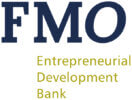Mining Opportunities in Copper Belt Africa
The Copper Belt in Africa is a region rich in mining opportunities. It’s a key player in the global copper production scene.
This article explores the potential for resource extraction in this area. We’ll delve into the economic and social implications of mining activities.
Whether you’re an investor, entrepreneur, or simply interested in the mining industry, this analysis of the Copper Belt will provide valuable insights. Let’s uncover the wealth beneath the African soil.
The Significance of Copper Belt in Africa
The Copper Belt is a major copper-producing region. It extends through Zambia and the Democratic Republic of Congo (DRC).
Historically, this region has played a significant role in copper mining. Its contribution to the global copper supply is immense.
Copper is a vital resource in today’s economy. Its demand is on the rise, making the Copper Belt even more significant.
In essence, the Copper Belt is a crucial player in the global mining industry.
Copper production in the Copper Belt is robust. Both Zambia and the DRC contribute significantly to the global supply.
However, there are still underdeveloped areas within the Belt. These areas hold potential for further exploration and extraction.
Modern exploration techniques could lead to new discoveries. This could boost the region’s copper production even more.
In short, the current state of copper mining in the Copper Belt is promising. Yet, there’s room for growth and expansion.
The Copper Belt is vast. It stretches across Zambia and the DRC. Yet, not all areas have been fully explored.
Modern exploration techniques could uncover new deposits. This could lead to an increase in copper production.
In essence, the Copper Belt holds untapped potential. It’s a promising region for investors and mining companies looking to expand their operations.
Mining in the Copper Belt has a profound economic impact. It creates jobs and boosts local economies.
Infrastructure development often follows mining activities. Roads, schools, and hospitals are built, improving living conditions.
However, mining also has social implications. Community engagement and development programs are crucial to ensure local acceptance.
Moreover, responsible mining practices can mitigate environmental concerns. This is key to sustainable development in the region.
Investing in the Copper Belt comes with challenges. Political instability and regulatory issues can pose risks.
However, foreign investment and partnerships can help develop the mining sector. They bring in capital and expertise.
Technological advancements also present opportunities. They can improve efficiency and reduce environmental impact.
Moreover, transparency and good governance are crucial. They build trust and ensure sustainable development of the mining sector.
Sustainable mining practices are vital in the Copper Belt. They help to mitigate environmental impacts and ensure long-term viability.
Initiatives like renewable energy sources can power mining operations. This reduces carbon footprint and operational costs.
Moreover, adhering to international standards and best practices is crucial. It ensures responsible mining and safeguards the region’s rich biodiversity.
The future of Copper Belt mining is promising. The global demand for copper, driven by trends like electric vehicle production, is set to rise.
However, challenges like political instability and regulatory issues must be addressed. This will ensure a sustainable and profitable mining sector in the Copper Belt.




















































